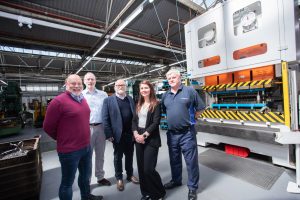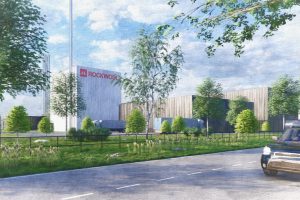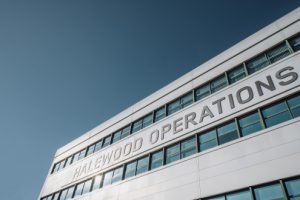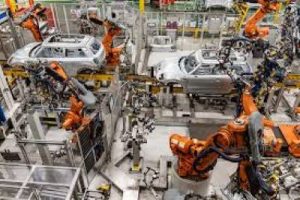JCB long-reach machine used to recover crashed Lancaster bomber

A STAFFORDSHIRE-made JCB excavator capable of digging to depths of 56ft (17m) has played a key role in the excavation of the remains of a Lancaster bomber shot down in Normandy on D-Day.
The JS360 long-reach machine rolled off the production line at JCB Heavy Products in Uttoxeter and went into action in France, where the aeroplane crashed on June 6, 1944.
French rental company and civil engineering contractor Christophe Beaussire, of Catz in Normandy, donated the use of the machine along with a JS220 and JS240 excavators, a Loadall telescopic handler and a JCB Fastrac tractor to complete the delicate excavation work.
The site of the plane crash, which has lain undiscovered for almost 70 years, was found by British aviation archaeologist and historian Tony Graves.
He had searched the area after reading of the crash of an American fighter. However, when he found the site two and a half years ago, he discovered around 300 rounds of British ammunition by the crater. He also found a ring near the site that belonged to Flight Lieutenant Albert Chambers DFC, of Normanton in Derbyshire, who had been a member of the crew of Lancaster ND739.
The four-engined bomber, piloted by Wing Commander Jimmy Carter, had taken off from RAF Coningsby in Lincolnshire early on D-Day, to carry out a raid on gun emplacements at Pointe du Hoc, on the Normandy coast, prior to the invasion landings. The aeroplane was returning to England following a successful mission when it was shot down near Carentan, but the exact location has remained undiscovered until now.
Mr Graves obtained permission to excavate the site from the farmer and from the French Government and tried to find remains of the bomber last year, using a 25-tonne excavator hired in from a local firm. However, the ground conditions were so bad that the machine itself had to be recovered from the site, before the aeroplane could be found.
By using the extended digging depth of Beaussire’s JS360LR long reach machine, the company has been able to carefully excavate the site, without having to track the heavy excavators into the soft ground in the excavation area.
Mr Graves said: “We simply couldn’t have done it without the long reach JCB. It was essential to the success of this excavation and allowed us to get down to a depth of around 30 feet.”
The dig revealed hundreds of twisted parts that have been identified as coming from the Mk II Lancaster, along with its Rolls-Royce Merlin engines, the 300 rounds of ammunition, propeller blades and wheel hubs.
However, the most poignant discoveries have been personal effects, including a scrap of an RAF tunic with medal ribbons, a crumpled Bomber Command whistle, a silver cigarette case and two torn RAF woollen jumpers.
“The object of the dig was always to recover remains of the crew,” said Mr Graves.
“They have always been listed as missing, lost without trace, so we wanted to give them a final named resting place. We did not find any human remains and only four good parachutes at the site, so we can only assume that they must have been buried among the unknown.”
The remains of the aircraft will be taken to a museum near Utah beach, where they will be displayed along with other wartime memorabilia.
Mr Graves is continuing his search for the airmen lost in the incident, who included Wing Commander Carter DFC, Squadron Leader Martin Bryan-Smith DFC, Flight Lieutenant Albert Chambers DFC, Flight Lieutenant Henry Jeffery DFM, Acting Flight Sergeant Guy Dunning DFM, Acting Flight Sergeant Frank Watson DFM, Australian Flight Lieutenant Ronald Conley DFC and Canadian Flight Lieutenant Herbert Reiger.








